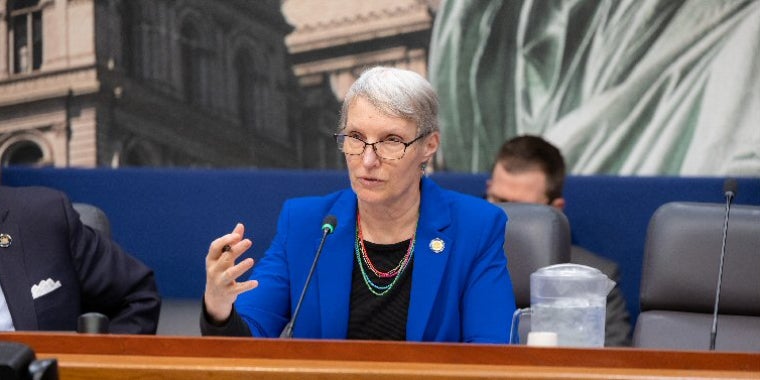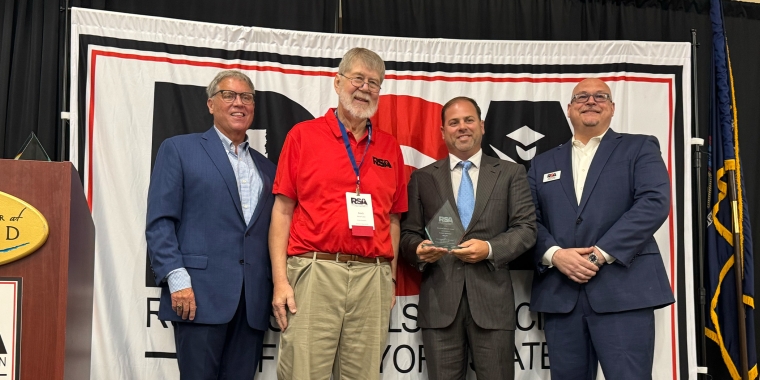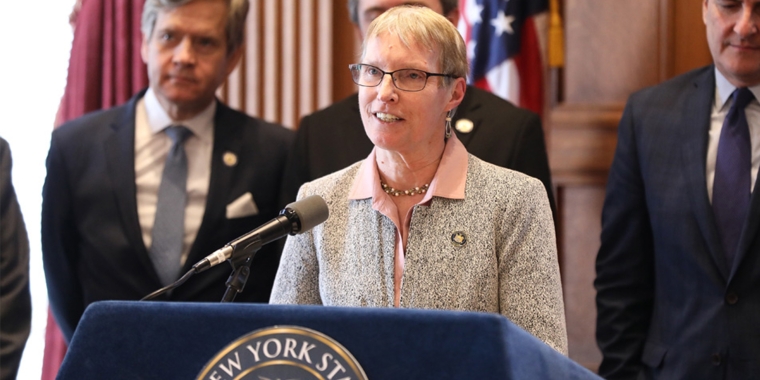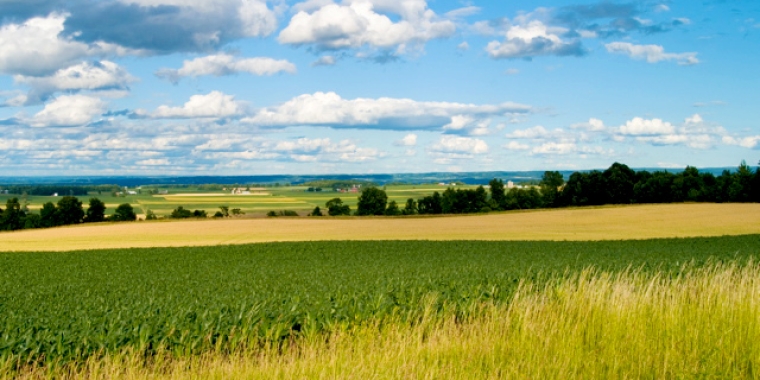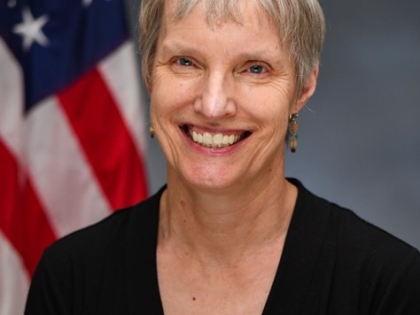
Onondaga Nation struggles to care for chronically ill after 13 years of flat funding from NY
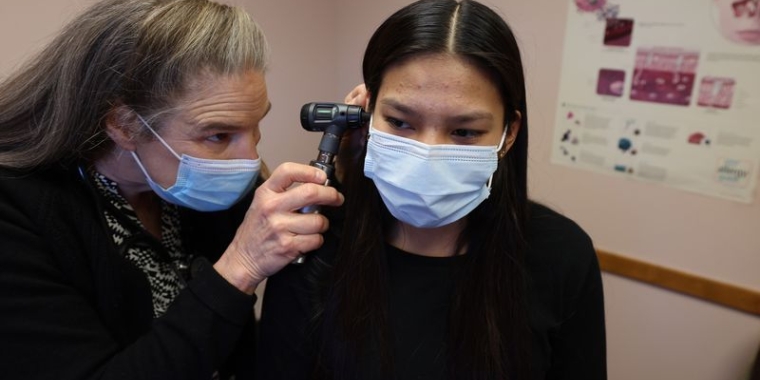
Dr. Eva Gregory examines Sophia Hill, 17, at the Onondaga Nation Health Center. The center is so short-staffed it is sending many patients to Syracuse hospital emergency rooms. March 20, 2023. Dennis Nett | dnett@syracuse.com
By James T. Mulder | jmulder@syracuse.com
Syracuse, NY -- Onondaga Nation residents used to be able to walk in and get medical care quickly at the reservation’s health center.
Now they wait months to get appointments at the state-funded medical and dental clinic on Route 11A in Nedrow.
The center is so short-staffed and strapped for cash it is sending many patients to Syracuse hospital emergency rooms where they wait for hours and sometimes leave without getting care.
“It’s a beautiful building,” said Tadodaho Sid Hill, the nation’s spiritual leader, of the two-story, Haudenosaunee-style longhouse the Onondagas built in 1997. “But if you don’t have enough staff what good is it?”
Health care staffing shortages are causing delays in care for many in Central New York. On the nation, there’s an additional hurdle – the state has frozen funding for the Onondaga clinic for more than a decade.
The state has not increased the health center’s $1.3 million annual budget in 13 years, payments that are required as part of a treaty. As a result the center can’t pay the going rate to nurses and other health providers. It’s at a competitive disadvantage with hospitals and other medical facilities, which have increased wages to fill job vacancies in a tight labor market.
The center is struggling to fill three vacancies for nurse practitioners and a dental hygienist because it cannot afford to pay as much as other medical and dental providers in the Syracuse area, according to its medical director. The center also cannot afford to make plumbing repairs and other necessary improvements to its building.
“The health and well-being of our people is at risk because New York is failing to meet its human rights obligations,” Hill said in a recent letter to Dr. James McDonald, the state’s health commissioner.
This year, the nation is asking for more help. The Onondagas are asking the state for $5 million to help make up for the lack of increases over 13 years. Going forward, the nation is asking for $2.3 million a year out of the state’s $227 billion budget.
Readily available primary care is sorely needed on the Onondaga Nation, where diabetes and other chronic illnesses are rampant, said Dr. Eva Gregory, the center’s medical director. Gregory is on the staff of Upstate University Hospital which has a state contract to operate the center.
About four of every 10 Onondagas die before age 65, the highest premature death rate in Onondaga County.
New York is required by state law to “administer to the medical health needs of the ambulant sick and needy Indians on the reservations.”
The state Health Department budget contains $25 million for health care services for indigenous populations at eight Indian nations throughout New York, including the Onondagas. The $25 million is for clinics and for health care services provided off the reservations to patients referred by the clinics.
When asked why funding for the Onondaga Nation’s health center has been held flat so long, a Health Department official said the clinic’s patients are free to go elsewhere for care.
“As sovereign nations, please note that while each clinic can provide assistance, it is not mandatory for members to participate in these state supported programs,” said Cadence Acquaviva of the state Health Department.
But most of the center’s patients have no other options for primary care, according to Gregory.
“Sending them to the emergency room is not good for patients,” she said.
Sen. Rachel May, D-Syracuse, supports Hill’s request for more state money.
May said the lack of funding is part of a “pattern of neglect” in the state’s dealings with the Onondaga Nation.
“It’s a high poverty area where the health outcomes are far worse than elsewhere so it makes sense that we put more resources there,” she said.
In addition to the one-time $5 million payment and an additional $1 million each year, Hill is also asking the state for similar increases for two other health clinics at the Tonawanda-Seneca and Tuscarora nations in Western New York. Those nations, like the Onondaga Nation, are part of the Haudenosaunee.
So far, the request from the Onondagas is getting some reaction, though it’s not as much as Hill and Gregory have hoped for.
The Senate has asked the governor’s office for an extra $1 million that would be split among the three nation’s clinics, according to Joe Heath, an attorney for the Onondaga Nation.
Heath said the nations are hoping the Assembly makes a similar proposal soon so there can be a three-way agreement between both houses of the Legislature and the governor’s office. The negotiations are part of finalizing Hochul’s $227 billion budget for fiscal year 2024, which begins April 1.
“That’s much less than what’s needed, but it certainly would be very appreciated,” Heath said.
Thirty-six percent of people on the Onondaga Nation die before their 65th birthday. That’s higher than any municipality in Onondaga County and significantly higher than the county’s 22% premature death rate, according to the Onondaga County Health Department.
About 40% of the health center’s patients have diabetes or are likely to develop it, according to Gregory.
Diabetes in turn often leads to kidney disease, cardiovascular disease and stroke, she said.
“Our patients are much more medically complex and need more care,” Gregory said.
The health center is located in a two-story Haudenosaunee-style log longhouse the Onondagas built in 1997. It has exam rooms, a lab and a dental clinic.
Before that building opened, a doctor saw patients in a portable modular building behind the Onondaga Nation School, while a dentist operated out of a nearby trailer.
Hill, who is 71, said when he was a child the health clinic only opened on Thursdays.
“The joke was you could only get sick on Thursdays,” he said. “All they did was basically give out pills and cough syrup.”
The health center has come a long way since then.
When Gregory started working at the clinic 30 years ago it was open two half days a week. Now it’s open five days a week. But because of the staffing shortage it had to close its doors one day last month.
It operates as a family primary care practice, caring for people of all ages. “It’s a family-oriented culture and we care for extended families, from womb to tomb,” Gregory said.
The center does not bill for services.
The Onondagas say the state is responsible for their health care under the terms of a treaty signed in the 1700s.
The Onondagas do not accept money from the federal Indian Health Service to support their health clinic. That’s because they want to maintain their sovereignty and remain independent from the federal government, Hill said.
About 2,000 Onondagas are eligible to get care at the center. It handles about 10,000 patient visits a year.
When the center was fully staffed, its doctors and other providers could spend as much time as necessary with patients, Gregory said. About 40 patients used to show up for afternoon walk-in clinics.
But the staffing shortage and the center’s financial problems have gotten worse since the Covid pandemic began three years ago, she said.
Staffing shortages are not unique to the Onondaga Nation.
Hospitals and other medical facilities everywhere are struggling to find nurses and other health care workers.
But the impact of the shortage is worse for the nation’s health center because it cannot match rising wages being offered by hospitals and other providers.
The average annual wage for nurse practitioners in the Syracuse area is about $120,000, Gregory said. The Health Center hasn’t been able to fill a nurse practitioner vacancy because it’s only offering $100,000. A dental hygienist who was making $24 an hour at the health center recently left to take another job paying $40 an hour, she said.
Patients have to wait six months for a dental appointment at the health center.
In addition to funding the Onondaga Nation’s Health Center, the state pays for prescription drugs, medical equipment, lab services, eye care and for health care services provided off site to patients referred by the Onondaga clinic.
Gregory said sending Onondagas to hospital ERs is not only bad for patients, but costs the state and taxpayers more than adequately funding primary care at the nation’s health center.
As the clinic struggles financially, a growing number of outside service providers are refusing to see Onondaga patients referred by the clinic because of long delays in getting reimbursed by the state, she said.
Those providers include a diabetic footwear supplier, an arthritis specialist, an orthopedic doctor, a durable medical equipment provider and a dental lab.
The level of health care funding the state provides for indigenous people would not be considered acceptable for any other group of people, Hill said in his letter to the state health commissioner.
“We remind NYS that the indigenous peoples of this land have given up so much for the promises that are continually broken,” he said in the letter.
